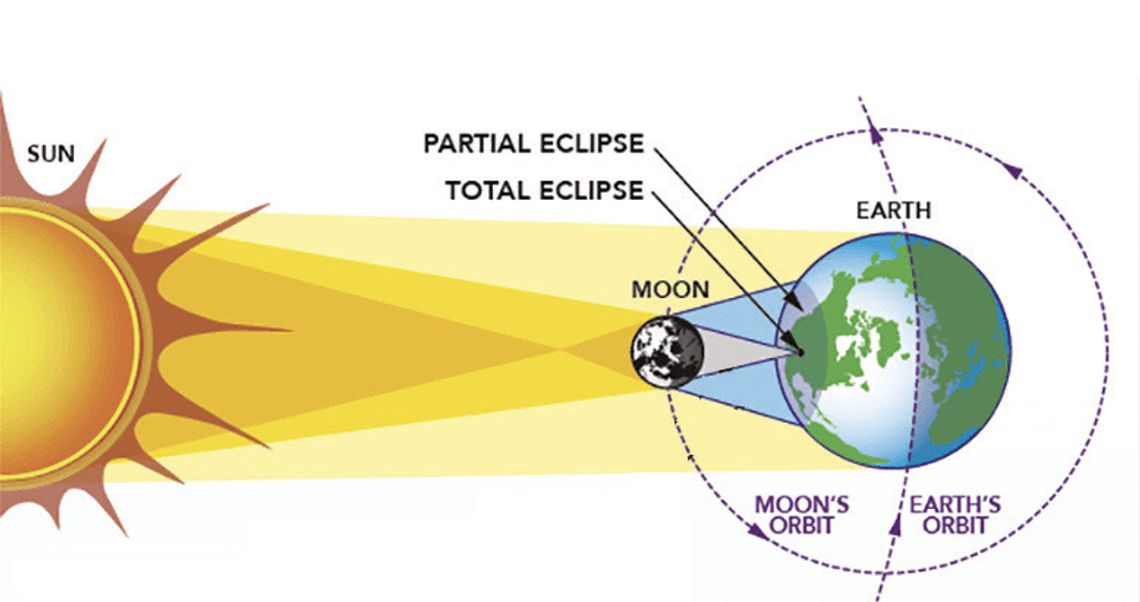
See Page 12 for important details to safely experience the eclipse in Wimberley
On April 8, from our little slice of heaven, Wimberley will have the opportunity to watch one of the rarer mechanics of our solar system take place. From roughly noon to 3 p.m., we’ll have a front row seat to witness the passing of the moon between the sun and our own planet during its orbit around us. The time the moon completely blocks our view of the sun is estimated to be at 1:35 p.m. For the two minutes and two seconds of darkness that we’ll experience, the air temperature will drop, winds might slow or a thunderstorm could kick up and we may be able to see the brighter stars and planets in our sky. Some of us might involuntarily shed tears.
Scientists tell us that other animals will note the change too. Writer Jeffrey Kluger of Time Magazine tells us that birds in the air may alight in trees or on the ground and go silent, dogs may cower, bees may return to their hives, and domestic horses and cows may take cover in their stables. Conversely, “other birds, insects and bats might emerge as the sky darkens.” Some behaviorists say birds and other animals might go to sleep or in the case of chimpanzees observed during an annular eclipse on May 30, 1994, they may climb trees and cast their eyes skyward to observe the change.
During the passage of the moon over the sun, we’ll observe the sun become a crescent shape in the sky as it partially eclipses the sun. We may see shadow bands, rapidly moving, long dark bands separated by white spaces that can be seen on the sides of buildings or the ground just before and after the full eclipse.
As the moon makes its final move over the sun, we might be able to see Baily’s Beads. Bailey’s Beads are several points of light that shine around the Moon’s edges. These are light rays from the sun streaming through the valleys along the Moon’s horizon. Very short-lived, they may

ECLIPSE STAGES: AS THE MOON PASSES BETWEEN THE SUN AND EARTH THE VIEW CHANGES. PHOTO COURTESY OF AMERICAN ASTRONOMICAL SOCIETY - RICK FIENBERG
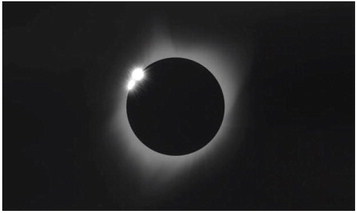
BAILY’S BEADS: BAILEY’S BEADS ARE SEVERAL POINTS OF LIGHT THAT SHINE AROUND THE MOON’S EDGES
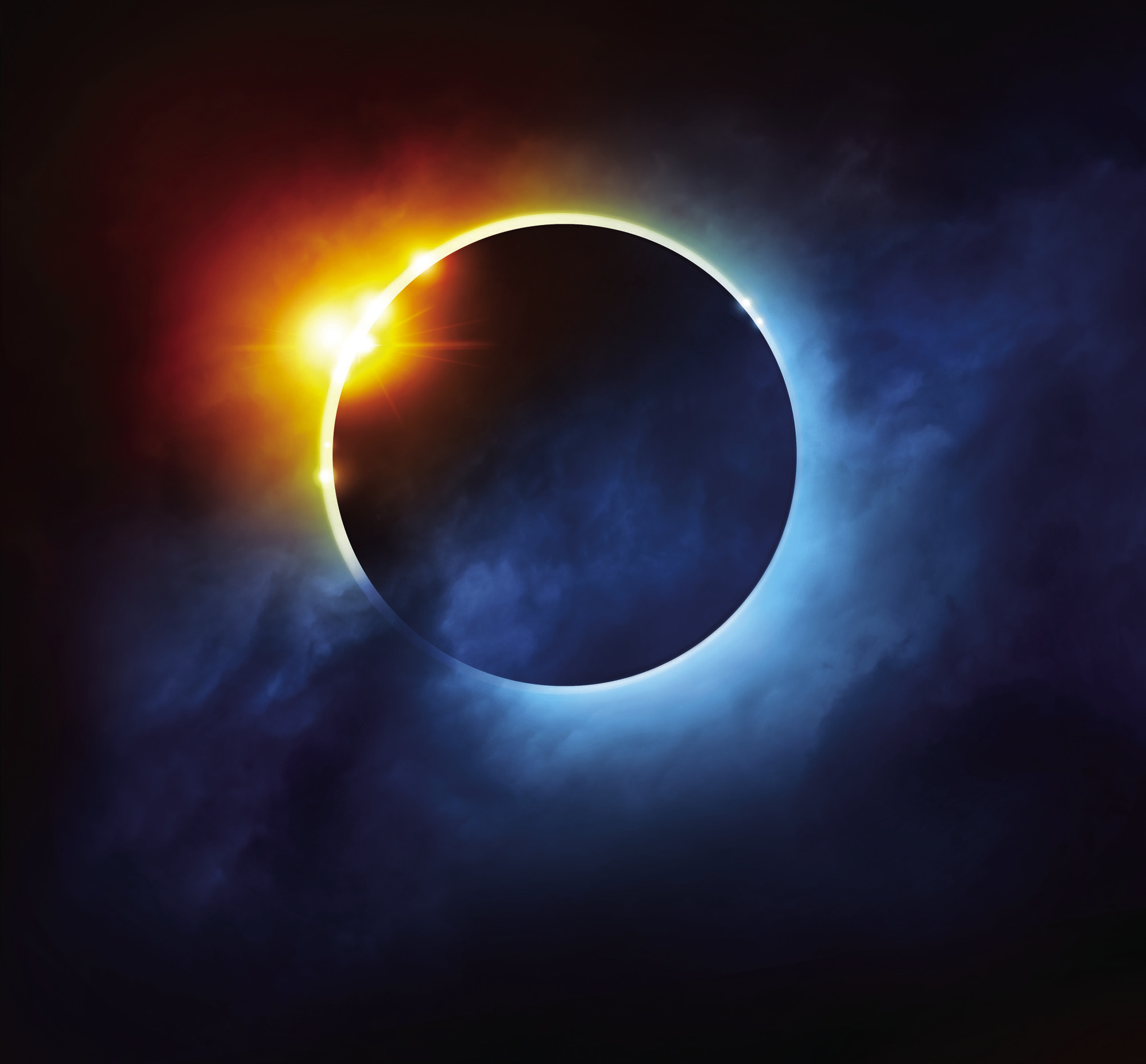
DIAMOND RING: AS BAILY’S BEADS BEGIN TO DISAPPEAR, A SINGLE BRIGHT SPOT WILL REMAIN ALONG THE EDGE OF THE MOON’S SHADOW.
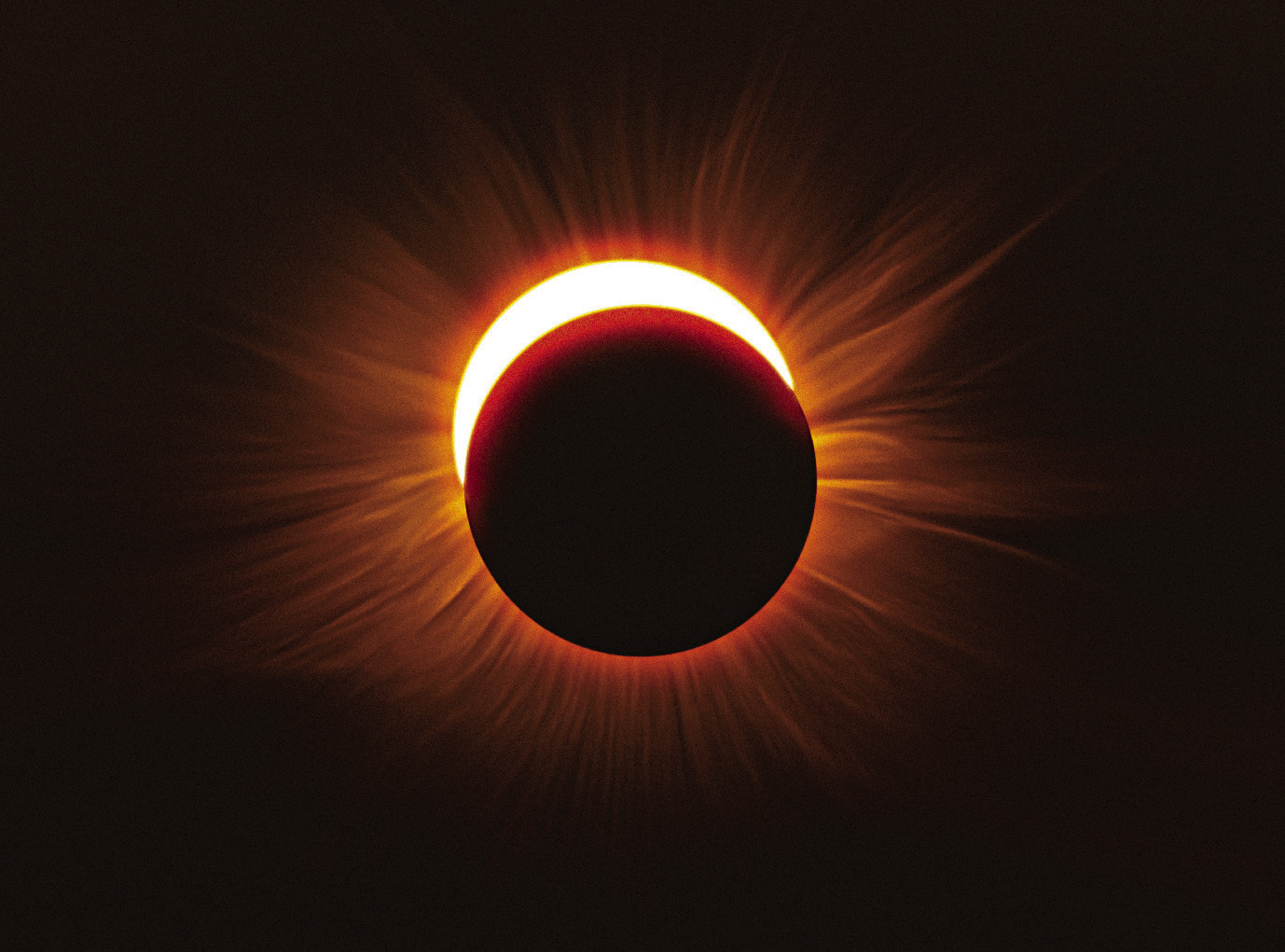
BEGINNING TO SEE THE SUN’S CORONA.
not last long enough to be noticeable.
As Baily’s Beads begin to disappear, a single bright spot will remain along the edge of the moon’s shadow. This bright spot resembles the diamond in a giant diamond ring formed by the rest of the Sun’s atmosphere.
Finally, as the moon completely darkens the face of the moon, we can see the sun’s beautiful corona. The corona is the outermost part of the sun’s atmosphere that is usually hidden by the bright light of the sun’s surface. The corona is about 200 times hotter than the sun’s temperature and extends millions of kilometers into outer space.
According to National Eclipse, an independent online resource, the next opportunity to see a total solar eclipse stretching from California to Florida will be August 12, 2045. During that event, the tip of the Texas Panhandle will be in the path of totality.
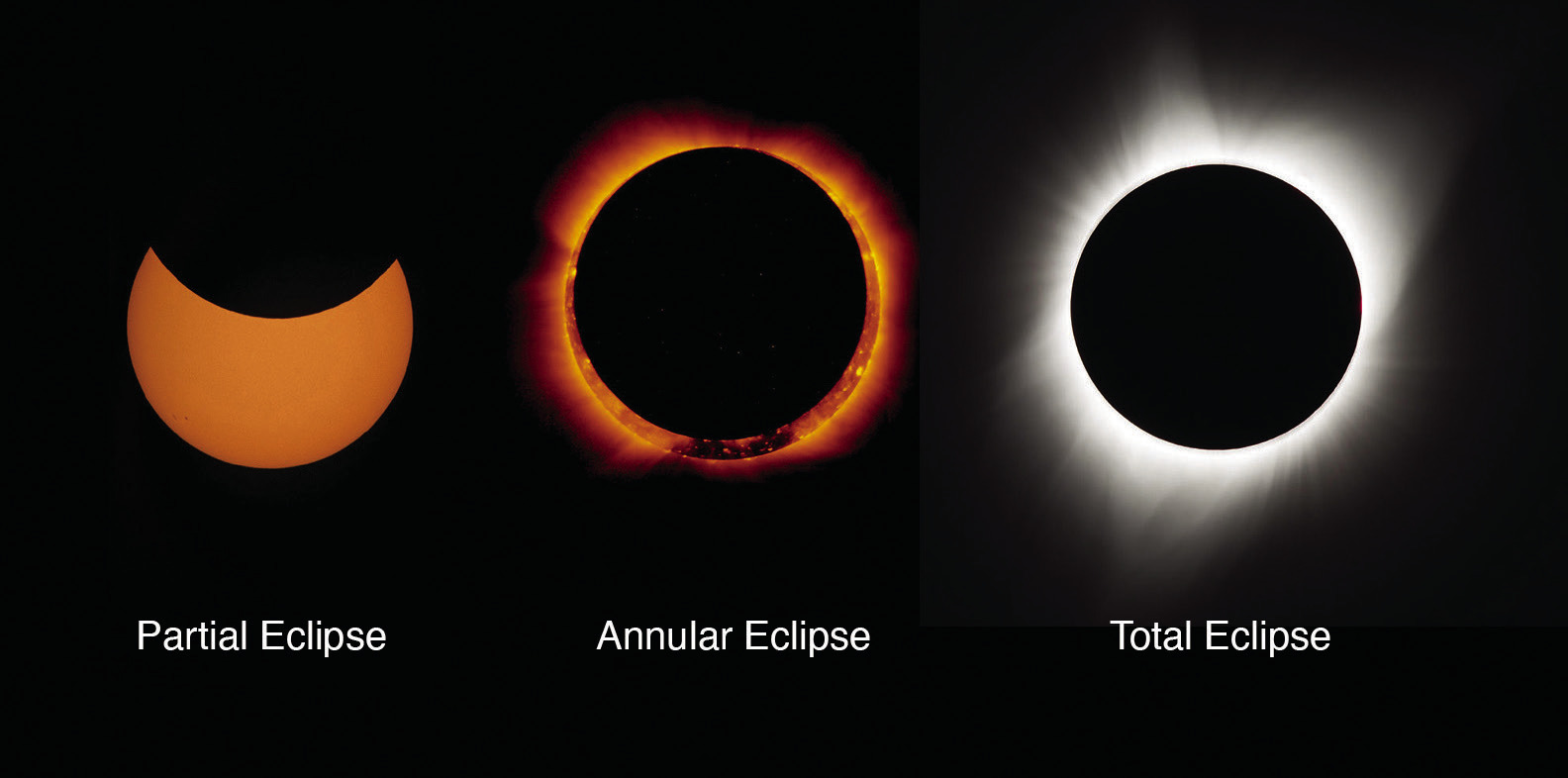
SUBMITTED GRAPHIC



